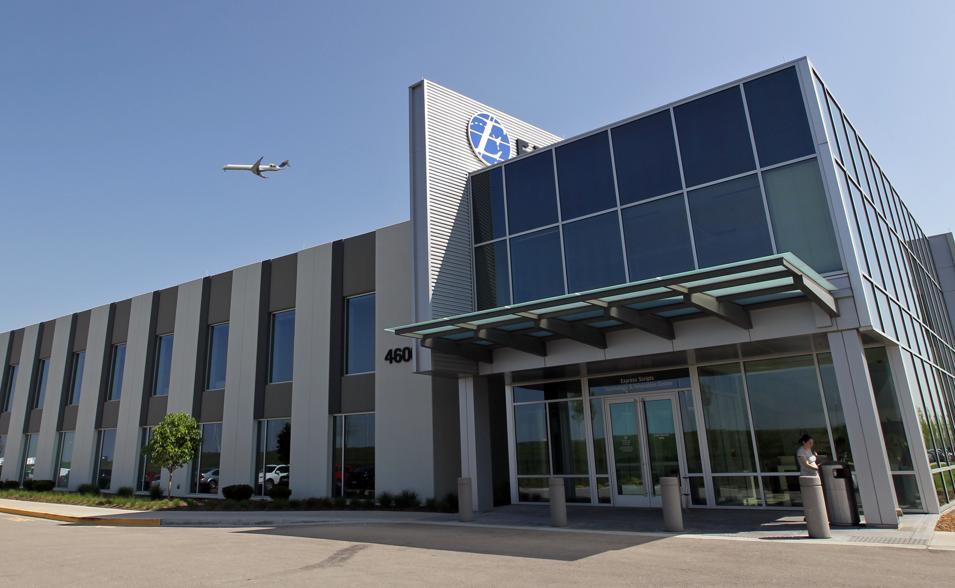
The path that prescription drugs take from the lab to your medicine chest is a long and complicated one. And the journey is made still more complex by the role of a very important but little understood middleman known as the pharmacy benefits manager.
These companies fill a crucial role by negotiating with drug makers on behalf of health plans, unions, and some employers to get the best price, which is particularly critical as the cost of medicines is ever-rising. Yet PBMs also stir controversy over concerns they may not always pass along the savings — called rebates — they negotiate for their clients, instead pocketing those funds to fatten their own bottom lines.
So a group of more than two dozen of the largest US corporations, including such household names as Macy’s, Coca-Cola, and American Express, recently formed an alliance to find ways to reduce health care costs. And one idea is to overhaul the way that PBMs are paid. Whether they have the clout to succeed is unclear, but Wall Street estimates they spend about $3 billion each year on pharmaceuticals.
The goal is to provide some transparency into a murky world — and it’s long overdue.
“We need to somehow open this black box,’’ said John Malley, who heads the national pharmacy practice at the Aon Hewitt benefits consulting firm.
To keep it simple, the Health Transformation Alliance, as it’s called, may seek to rewrite their contracts to eliminate any undisclosed drug-company rebates that PBMs might hold back for themselves. Instead, the companies would pay PBMs for the actual cost of medicines, plus an agreed-upon fee.
Presumably, this would lower corporate health care bills that, in turn, could lower employee costs.
There have been previous efforts over the years by corporate America to peel back the PBM curtain, but this approach would amount to a radical shift for the largest PBMs — notably, Express Scripts, CVS Caremark, and United Healthcare’s Optum — which collectively manage about 70 percent of the pharmacy benefits in the United States.
“This would move these companies away from their current business model pretty dramatically,’’ said David Dross, the managed pharmacy practice leader at the Mercer benefits consulting firm. “It could be a game changer.’’
Right now, though, these big PBMs have the upper hand.
For instance, in contracts with drug makers, a PBM may classify a rebate it has negotiated as a type of fee, allowing the PBM to keep it, rather than pass it on to the client, according to Linda Cahn, an attorney who advises health plans. This places the client at a big disadvantage, because contracts are proprietary, which makes it hard to know what the rebates really looked like in the first place.
Similarly, contracts may allow PBMs to loosely define what is considered a brand name or generic drug.
As a result, some may be incorrectly categorized, which means clients may not receive appropriate discounts. And the difference can be substantial. Cahn said average discounts for brand drugs range from 15 to 21 percent, and average discounts for generics runs from 72 to 82 percent.
“The PBMs play a labeling game,’’ she explained. “So the clients have no idea how much money they are leaving on the table.’’
The big PBMs maintain that such concerns are misplaced.
A recent report from the Pharmaceutical Care Management Association, an industry trade group, forecasts PBMs will save consumers $654 million over the next decade. And PBMs pass back to employers more than 90 percent of all rebates, according to Adam Fein of Pembroke Consulting, who tracks the prescription drug supply chain. Of course, this varies from company to company.
In a conference call with Wall Street analysts last week, Express Scripts chief executive Tim Wentworth insisted the company has, for many years, been willing to write contracts under which 100 percent of rebates are passed along to clients and said these are “completely auditable.’’ A company spokesman added that its customers are “sophisticated buyers.’’
Wall Street wags largely agree.
Even so, Citi analyst Garen Sarafian wrote to investors that “we agree there needs to be greater transparency from PBMs.’’ He noted that, four years after Express Scripts bought a large rival called Medco Health Solutions, the PBM has failed to disclose the same metrics that Medco used to provide. And the first item on his list was rebate retention rates.
There are caveats, though, about the alliance and its plans.
For one thing, its best chance at success would be to negotiate as a group, rather than in piecemeal fashion. Although the HTA roster may spend a few billion dollars on medicines each year, Fein pointed out this is still a “very small’’ share of all spending. And Malley noted some of the companies could actually end up with higher bills anyway, because fully dissecting PBM finances makes for a difficult analysis.
“They’ll never know the gouge factor,’’ he said.
Maybe not. Yet the unfortunate perception is that PBMs are not doing all they can to help lower drug costs. The effort by the alliance may ultimately prove futile, but is worth exploring. After all, a middleman is only as good the deal being offered.
Ed Silverman can be reached at ed.silverman@statnews.com. Follow him on Twitter @Pharmalot.



